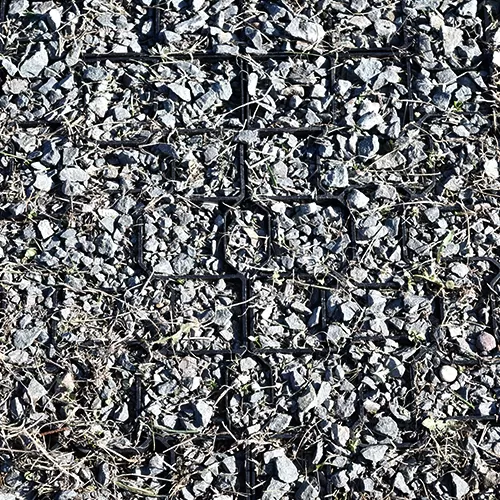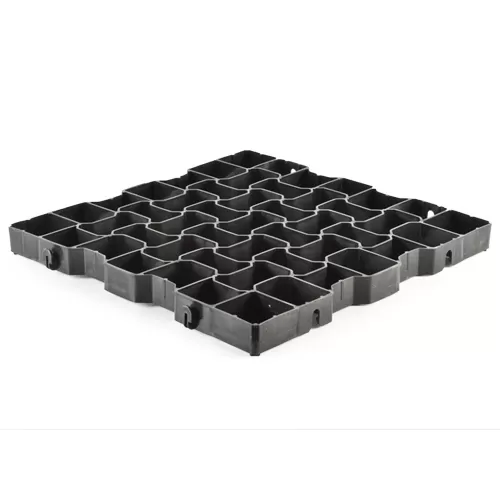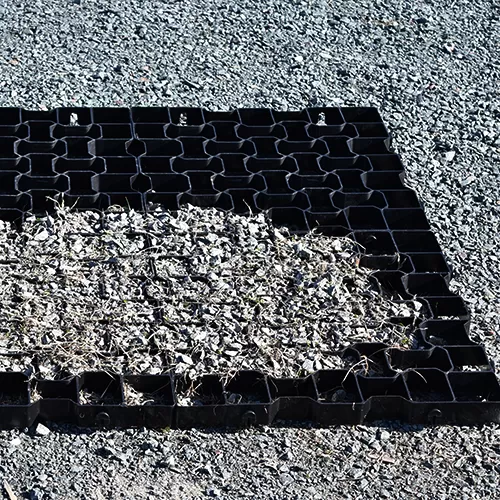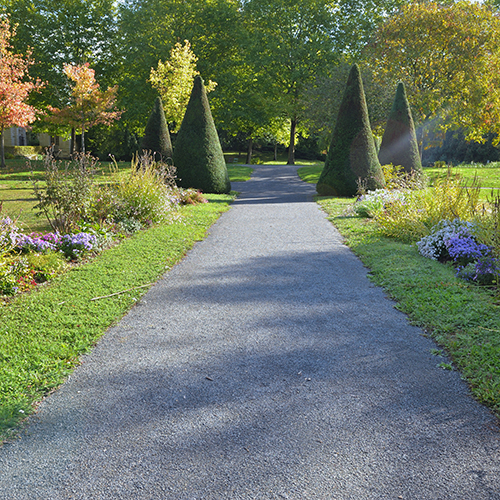How to Prepare the Ground for a Gravel Walkway
Related Product: GeoGrid Cellular Paving System 4 cm x 1.6x1.6 Ft.
How to Prepare the Ground for a Gravel Walkway
Before you start constructing your walkway, you’ll need to plan out exactly where it will be located. Use spray paint or chalk to mark out the walkway’s outline, and be sure to measure its width as you go to ensure that it’s consistent, especially if the path curves and winds.How you prepare your walkway will depend on your installation method. One traditional method is to excavate into the earth, lay landscaping fabric and plastic edging, and then fill in the area with gravel.
This is a somewhat labor-intensive installation option. You will need to dig down about four inches, and unless you’re creating a large walkway, chances are you will need to do the digging by hand.
The landscaping fabric can help to prevent weeds from growing up through the walkway, and the plastic edging helps to create clean edges and prevents them from collapsing in. However, if the path will see significant traffic or high volumes of rain or runoff water, you may find that your gravel starts to travel out of the path and gets mixed into the surrounding grass.

A better option is to use a product like the GeoGrid Cellular Grid Paver Tile. The tile offers ground reinforcement and stabilization, helping to keep your gravel in place and preventing it from mixing with the surrounding grass.
The tile features a cellular design, so extra rain or flood water will simply drain through it. It’s lightweight and features an interlocking design, so you can easily secure multiple tiles together to create your path.
Since the tile measures just four centimeters high, there isn’t a need to excavate down a full four inches, which can save you some labor. Instead, you’ll need to excavate just two inches and then lay the tile on a compacted surface, such as dirt or crushed stone dust.

These tiles are also supremely strong and are able to support up to 35 tons per square foot. If vehicles have to cross over the path, the tiles can easily withstand the weight.
If you choose to use these tiles, it can be helpful to install a weed barrier underneath them. That barrier can help to prevent weeds from growing up through the tiles and your gravel, and it can make for less maintenance for you.
Once installed, you just have to fill in the tiles with gravel or small stones. You can use different types of gravel, including pea gravel or crushed stone, depending on the aesthetic that you want.
Additional Tips for Your DIY Gravel Walkway
When you design your walkway, make sure that you choose dimensions that will work well for its use. You will want the path to be at least 1.5 feet wide for someone to comfortably walk down them.Your path can be three or four feet wide, which will give room for multiple people to use it at a time. Try laying out strings or painting the area so you can visualize what the path will look like.
As you design the path, try to avoid placing it on steep inclines. You’ll be fighting gravity in these areas, and keeping the gravel in place during heavy rains will be a challenge.
If you’re installing the path in a garden, visualize how you’ll be using the area. Do you constantly run hoses back and forth the space where you’re putting a path? If so, you might find that you’re constantly dragging gravel out of the walkway.
Think about where the path should start and stop, too. Leading people up to a destination like a driveway or a porch is a logical choice, and you’ll want to widen the path at these points.
For the best result, choose a gravel or rock that will look great with your other landscaping elements. You’ll want to consider how the rock’s color works with other features or nearby buildings.
Choosing your gravel is partially personal preference. Small gravels, like pea stone, can be packed more tightly, so they can create a flatter surface that’s often easier to walk on.
Larger gravel pieces don’t pack as tightly, but they are also more difficult to kick out of the pathway, so they tend to stay in place more easily. If you choose to use large material, like stones, you can add fine screenings to help stabilize those stones and create a safer walking surface.

As you build your walkway, you’ll want to come up with different ideas about how to edge the path. Adding an edging material like large stones or even logs can make the path more attractive, and it also helps to keep the gravel within the path.
